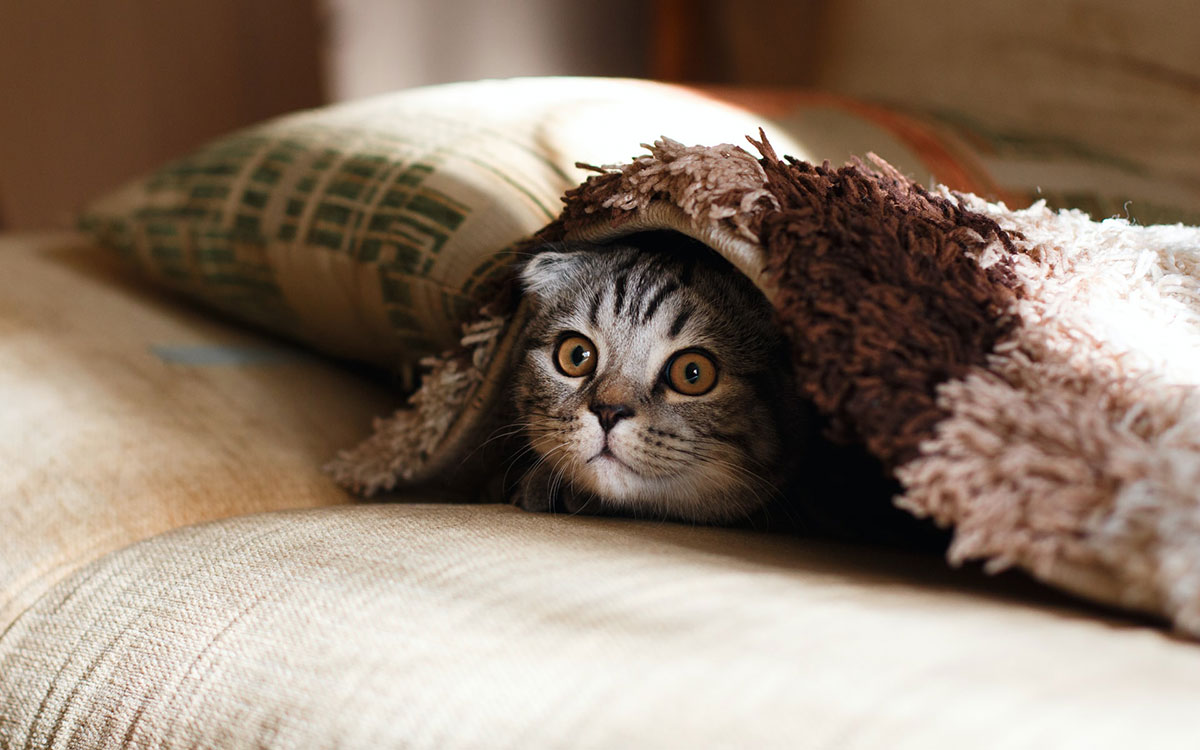Cats can develop diabetes, just like humans. Spotting symptoms early is crucial.
It helps manage the condition effectively. Understanding cat diabetes starts with knowing its signs. When their blood sugar levels are off, cats may show unusual behavior, such as increased thirst, frequent urination, or sudden weight loss. These signs can be subtle, making them easy to overlook.
A timely diagnosis ensures your cat gets the care it needs. Recognizing these symptoms helps your furry friend lead a healthier life and saves you from future complications. The sooner you act, the better. In this blog, we will explore how to spot diabetes symptoms in cats and steps you can take to manage their health. Stay informed and keep your feline friend healthy.

Recognizing Cat Diabetes
Recognizing cat diabetes is crucial for your pet’s health. Many cat owners might overlook initial signs. Early detection can make a big difference. Cats can’t tell us how they feel. So, it’s up to us to notice changes. Understanding symptoms helps in seeking timely vet care.
Common Symptoms
Increased thirst is a common symptom in diabetic cats. You might notice your cat drinking more water. Frequent urination often follows increased thirst. Your cat may visit the litter box more often. Unexplained weight loss can also be a sign. Even with a good appetite, your cat might lose weight. Another symptom is increased hunger. Cats with diabetes may seem hungry all the time.
According to the Merck Veterinary Manual, polydipsia (excessive thirst) and polyuria (frequent urination) are two hallmark symptoms of feline diabetes caused by persistent hyperglycemia.
👉 Merck Vet Manual – Diabetes Mellitus in Cats
Diabetes in cats often stems from obesity and genetic factors. Poor diet and lack of exercise can worsen the condition. Monitoring weight and ensuring a balanced diet are crucial in preventing diabetes.
According to a study published in the Journal of Veterinary Internal Medicine, overweight neutered male cats are at significantly higher risk of developing diabetes.
👉 Prahl et al., J Vet Intern Med
Subtle Signs
Sometimes, signs of diabetes are less noticeable. Your cat might become less active. Lethargy is a subtle symptom you should watch for. You might also notice a change in your cat’s coat. It could become less shiny or more matted. It could indicate a health issue. Behavioral changes might also occur. Your usually friendly cat could become irritable. Or, a shy cat might seek more attention.
Behavioral Changes In Cats
Cat diabetes can lead to noticeable behavioral changes, which often indicate underlying health issues. Observing your cat’s behavior can provide vital clues. Early detection aids in better diabetes management. Understanding these signs is crucial for your feline’s health.
Increased Thirst
Is your cat drinking more water than usual? It could be a sign. Increased thirst is a common symptom of diabetes in cats. Cats with diabetes often show signs of dehydration. They may seek water more frequently. Keep an eye on their water bowl levels. If it’s empty more often, take note.
Frequent Urination
Have you noticed any changes in your cat’s litter box habits? Frequent urination is another key symptom. Cats with diabetes urinate more often because their bodies try to flush out excess sugar. The litter box might need cleaning more frequently. It is essential to observe and report this change.
Weight Fluctuations
Cats can experience weight fluctuations due to diabetes. Recognizing these changes is crucial for early diagnosis. Unexplained weight loss or gain often signals health issues. Awareness helps in managing your cat’s health effectively.
Sudden Weight Loss
Sudden weight loss in cats may indicate diabetes. Watch for a decrease in appetite or an unexplained weight drop. Cats with diabetes struggle to convert sugar into energy. That leads to muscle and fat breakdown. A quick drop in weight can be alarming. Regularly monitor your cat’s weight. Use a consistent method to track changes. Seek veterinary advice if weight loss occurs without diet changes.
Obesity Concerns
Obesity in cats can be a warning sign of diabetes. Excess weight strains your cat’s body, increasing the risk of diabetes. Overweight cats often develop insulin resistance, making managing blood sugar levels difficult. Regular exercise and a balanced diet can help. Monitor your cat’s weight and body condition. Consult your vet for personalized dietary advice. Addressing obesity early can prevent diabetes complications.

Eating Habits Alterations
Recognizing changes in your cat’s eating habits can be crucial in identifying potential health issues like diabetes. Cats, like humans, can exhibit distinct eating pattern shifts when their blood sugar levels are imbalanced. This section will guide you through the common eating habits alterations you might notice in a diabetic cat and offer insights on effectively addressing these changes.
Increased Appetite
Has your cat suddenly become insatiable, always begging for food? An increased appetite is one of the telltale signs of diabetes in cats. Your cat may still lose weight despite eating more, which can be alarming.
It happens because their body isn’t properly absorbing the nutrients from the food. If you notice your feline friend is always hungry and losing weight, it might be time to consult your vet.
Consider keeping a food diary for your cat. Note the quantity and frequency of meals. Does it seem like no amount of food satisfies them? This record can be valuable when discussing symptoms with your veterinarian.
Loss Of Appetite
On the flip side, some diabetic cats may lose their appetite. They might turn their nose up at their favorite treats or kibble. It can be equally concerning, as it may indicate other complications related to diabetes.
Monitor them closely if your cat starts skipping meals or eating less than usual. Are they lethargic or showing other unusual behaviors? Loss of appetite combined with other symptoms can signal advanced diabetes or complications.
Try offering different types of food or altering their feeding routine. Sometimes, a change in diet can reignite their interest in eating. However, persistent refusal to eat should prompt a visit to your vet.
Have you ever noticed these shifts in your cat’s eating habits? Observing and acting quickly can make all the difference in managing your cat’s diabetes effectively. What steps will you take to meet your cat’s dietary needs?
Physical Appearance Shifts
Cats with diabetes often show changes in their physical appearance. These shifts can be early warning signs of the condition. Recognizing these symptoms can help in seeking timely veterinary care. Many cat owners notice changes in their pet’s coat and skin first. Understanding these changes can be crucial in managing cat diabetes effectively.
Coat Condition Changes
A diabetic cat’s coat may appear dull or unkempt. Cats often stop grooming themselves as they did before. The once shiny fur can become dry and brittle. You might notice more shedding than usual. This change usually signals an underlying health issue. Regular grooming helps, but the condition may persist without medical attention.
Skin Issues
Diabetes can cause several skin problems in cats. You might see flaky skin or dandruff. A weakened immune system can also cause skin infections. Cats may scratch or bite their skin more frequently, leading to sores or bald patches. Prompt veterinary care is essential to address these issues.

Activity Level Variations
Cats with diabetes can show subtle or noticeable changes in activity levels. Being aware of these changes can help detect them early. Let’s explore two everyday activity level variations in diabetic cats.
Lethargy
Lethargy in cats can be a sign of diabetes. Diabetic cats might sleep more than usual and show less interest in play or exploration. A cat that is usually energetic might seem tired and inactive. This change is often gradual but noticeable. Owners should monitor their cats’ energy levels closely.
Hyperactivity
Hyperactivity can also be an indicator. Some diabetic cats may appear restless, pace, or act unusually energetic. This behavior can be due to unbalanced glucose levels. Hyperactivity might be mistaken for normal playfulness. It’s essential to observe any drastic changes in behavior. Keeping track of these patterns helps you better understand your cat’s health.
Vision And Eye Health
As a cat owner, you must ensure your feline friend stays healthy. One area that often goes unnoticed is their vision and eye health. Cats with diabetes are particularly prone to eye-related issues. Understanding these symptoms can help you act quickly and provide the necessary care.
Cloudy Eyes
Cloudy eyes in cats can be a sign of diabetes. You may notice a milky or hazy appearance in your cat’s eyes. This happens when the lens becomes opaque due to high blood sugar levels. If your cat suddenly develops cloudy eyes, it’s time to consult a vet.
Have you ever noticed your cat bumping into things? Cloudy eyes might be the reason. Monitoring these changes is crucial as they can affect your cat’s quality of life. Early detection is key to preventing further complications.
Vision Loss
Vision loss is another alarming symptom of diabetes in cats. Your cat might seem disoriented or hesitant to move, or it might avoid jumping onto its favorite spots. These changes can be subtle but significant.
Imagine your cat not finding their way to their food bowl. If you observe such behavior, it could be due to impaired vision. Treating underlying diabetes can often improve their sight. Be proactive and discuss these observations with your vet.
Spotting these symptoms early can make a difference. Would you know what to do if your cat’s vision suddenly changed? Keep an eye on their behavior and eye health. Your vigilant care can help manage their diabetes effectively.
Importance Of Early Detection
Recognizing cat diabetes symptoms early is crucial for your pet’s health. Early detection can make a big difference. It allows for timely treatment. This can prevent more serious health issues. Knowing what to look for can save your cat’s life.
As noted by the American Association of Feline Practitioners, early diagnosis of feline diabetes leads to better prognosis and may reduce the need for lifelong insulin therapy.
👉 AAFP Diabetes Resource
Preventing Complications
Spotting symptoms early helps prevent complications. Uncontrolled diabetes can harm your cat’s organs. It can lead to nerve damage. This might affect your cat’s ability to walk. Early treatment can help manage these risks. It keeps your cat healthier for longer.
Veterinary Intervention
A vet’s role is vital in early detection. They conduct tests to confirm diabetes, which guides the treatment plan. Regular vet visits ensure your cat stays on track. Early intervention can improve your pet’s quality of life and extend its lifespan.
Frequently Asked Questions
How Can I Treat My Cat’s Diabetes At Home?
Treat cat diabetes by monitoring blood sugar levels, injecting insulin, and feeding a low-carb diet. Regular vet check-ups are essential to adjust treatment. Maintain consistent meal times and portion control to stabilize glucose levels. Consult your vet for personalized advice and management plans.
The American Animal Hospital Association (AAHA) recommends twice-daily insulin injections and carbohydrate-restricted diets for optimal feline diabetes management.
👉 AAHA Diabetes Guidelines
How To Check A Cat For Diabetes?
Monitor your cat for increased thirst, frequent urination, and weight loss. Visit a vet for blood and urine tests to confirm diabetes. Maintain regular check-ups to manage the condition effectively.
How Do Cats Act If They Have Diabetes?
Cats with diabetes often show increased thirst and urination. They might lose weight despite a good appetite. Lethargy and decreased activity levels can occur. Some cats may develop a dull coat. Regular veterinary check-ups are crucial for management.
What Can Be Mistaken For Diabetes In Cats?
Hyperthyroidism or kidney disease can be mistaken for diabetes in cats. Both conditions show similar symptoms, such as increased thirst and urination. Veterinary diagnosis is essential to distinguish between these diseases. Monitoring your cat’s behavior and getting regular check-ups can help identify the correct condition early.
Conclusion
Spotting cat diabetes symptoms early can save your cat’s life. Watch for increased thirst and urination. Notice weight loss or vomiting. These signs need a vet’s attention. Early diagnosis helps manage diabetes better. Regular check-ups are crucial. Keep your cat’s health a priority.
Discuss any changes with your vet promptly. A healthy diet and exercise can support your cat’s well-being. Your cat deserves a happy, healthy life. Stay observant and proactive. Your care makes a difference. Protect your furry friend. Act quickly on any concerns.
Your awareness is vital.
References
- Merck Veterinary Manual. Diabetes Mellitus in Cats. merckvetmanual.com
- Prahl A, Guptill L, Glickman NW, Tetrick M, Glickman LT. Time trends and risk factors for diabetes mellitus in cats: Analysis of veterinary medical data. J Vet Intern Med. PubMed
- Roomp K, Rand J. Glargine insulin and low-carb diets in feline diabetes management. JFMS. PubMed
- American Animal Hospital Association. Diabetes Management Guidelines for Dogs and Cats. aaha.org
- American Association of Feline Practitioners (AAFP). Diabetes Mellitus Resources. catvets.com
🩺 Reviewed by Dr. Audrey Cook, BVM&S, DACVIM-SAIM, DECVIM-CA
Professor of Small Animal Internal Medicine
Texas A&M University, College of Veterinary Medicine
Dr. Audrey Cook is a globally recognized veterinary endocrinologist. She specializes in feline diabetes, insulin therapy, and small animal internal medicine. Her work has guided veterinary practices worldwide in understanding and managing chronic feline conditions.






